How to Improve Public Transport Systems in Urban Areas
In today's fast-paced world, urban areas are increasingly confronted with the challenge of providing efficient and effective public transport systems. As cities grow and populations swell, the demand for reliable transportation options becomes more pressing. Enhancing public transport is not just about getting people from point A to point B; it's about creating a seamless, enjoyable experience that encourages people to leave their cars at home. This article explores effective strategies to enhance public transportation in urban settings, focusing on efficiency, accessibility, and sustainability for better urban mobility.
Before we can improve public transport systems, we need to understand the existing challenges that plague them. For many urban areas, overcrowding is a significant issue. Imagine cramming into a bus during rush hour, shoulder to shoulder with strangers, and feeling the frustration of delays. This scenario is all too common and can lead to a negative perception of public transport. Moreover, inefficiency is another hurdle; when buses and trains do not run on time, commuters are left feeling stranded and disillusioned. Lastly, accessibility is a critical concern. Many systems fail to cater to the needs of diverse populations, including the elderly and those with disabilities. By examining these challenges, we can identify key areas for improvement that will make public transport more appealing to everyone.
Upgrading transport infrastructure is crucial for improving service quality. Think of public transport infrastructure as the backbone of urban mobility. By modernizing stations, expanding routes, and ensuring that the systems can accommodate increased passenger loads, we can create a more robust framework for urban transport. This investment not only enhances the commuter experience but also encourages more people to use public transport, thereby reducing traffic congestion and pollution.
In this digital age, leveraging technology can streamline operations and improve user experience. Implementing real-time tracking systems allows commuters to know exactly when their bus or train will arrive, eliminating the anxiety of waiting. Mobile apps that provide route planning and ticket purchasing options can significantly enhance convenience for commuters. Imagine being able to check your transport options while sipping your morning coffee! Smart ticketing systems can further simplify the process, making it easier for users to navigate the public transport landscape.
Utilizing data analytics is essential for assessing transport patterns and user feedback. By analyzing this data, transport authorities can make informed decisions that lead to better planning and operational strategies. For instance, if data reveals that certain routes are consistently overcrowded, adjustments can be made to increase frequency or capacity. This approach not only improves the user experience but also ensures that public transport systems are more responsive to the needs of the community.
Implementing smart traffic management systems can optimize traffic flow, reduce congestion, and improve the punctuality of public transport services. Imagine a city where traffic lights are synchronized with public transport schedules, allowing buses and trams to move freely without unnecessary stops. This level of efficiency not only benefits commuters but also enhances the overall urban environment, making cities more livable and enjoyable.
Encouraging sustainable transport options, such as electric buses and bike-sharing programs, can significantly reduce the carbon footprint of urban transport systems. By promoting healthier commuting alternatives, we can foster a culture of sustainability. Cities can also implement incentives for those who choose to use public transport or opt for greener options. Think of it as a win-win situation: less pollution and healthier citizens!
Involving the community in planning and decision-making processes ensures that public transport systems meet the needs of their users. When people feel that their voices are heard, a sense of ownership and satisfaction develops. It's like being part of a team where everyone’s input matters. Regular surveys and community workshops can gather valuable insights from users, helping transport authorities understand public needs and preferences for service improvements.
Engaging with the community through surveys and workshops provides a platform for users to express their opinions and share their experiences. This feedback is invaluable for transport authorities looking to make meaningful changes. By focusing on the community's voice, we can create a public transport system that truly reflects the needs of its users.
Collaborating with local businesses, community organizations, and government agencies can enhance public transport initiatives. By working together, stakeholders can ensure a more integrated approach to urban mobility solutions. Imagine a scenario where local businesses offer discounts to customers who use public transport—this not only promotes public transit but also boosts local economies.
As we look to the future, exploring emerging trends such as autonomous vehicles and shared mobility services can provide insights into how urban transport can evolve. Cities that adapt to these innovations will likely see a transformation in how people navigate their environments. The key will be to remain flexible and open to new ideas while keeping the focus on enhancing the commuter experience.
- What are the main benefits of improving public transport systems? Enhancing public transport can lead to reduced traffic congestion, lower emissions, and improved accessibility for all citizens.
- How can technology improve public transport? Technology can streamline operations, provide real-time information, and create a more user-friendly experience through mobile apps and smart ticketing.
- Why is community engagement important? Involving the community ensures that the transport systems meet the actual needs of users, fostering a sense of ownership and satisfaction.
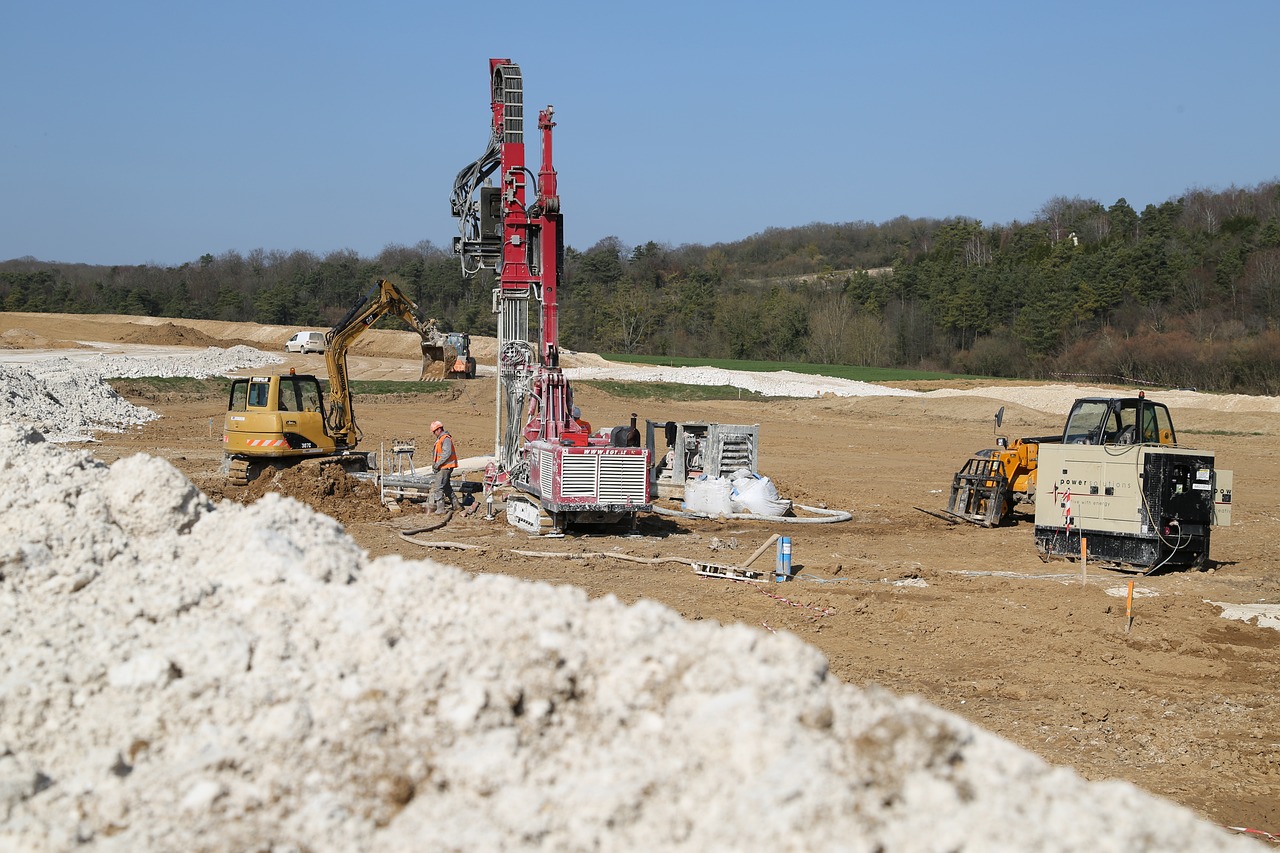
Understanding Current Challenges
When it comes to urban public transport systems, it's no secret that many cities are facing a myriad of challenges. Overcrowding, inefficiency, and a lack of accessibility are just a few of the hurdles that need to be overcome. Imagine trying to squeeze onto a packed bus during rush hour—it's like trying to fit a square peg into a round hole! This scenario not only frustrates commuters but also discourages people from using public transport altogether, leading to increased traffic congestion and pollution.
One of the most pressing issues is overcrowding. Many urban transport systems were designed decades ago, and they simply can't keep up with the growing population. As more people flock to cities in search of opportunities, the demand for reliable and efficient public transport skyrockets. This results in packed trains and buses, where personal space becomes a luxury rather than a norm. In fact, studies show that overcrowding can lead to a 30% increase in travel time, which is a significant deterrent for potential users.
Moreover, inefficiency is another major challenge. Many public transport systems operate on outdated schedules and routes that don't reflect the current commuting patterns of residents. For instance, a bus that runs every 30 minutes during peak hours might not be sufficient for a city where the population has doubled in the last decade. Commuters crave efficiency; they want to get to their destinations quickly and without unnecessary delays. If public transport can't deliver that, people will turn to their cars, exacerbating traffic issues.
Accessibility is equally critical. Urban areas often have diverse populations, including the elderly, disabled, and those without access to reliable information about transport options. If a public transport system isn’t designed with these groups in mind, it can lead to feelings of exclusion and frustration. For example, consider a visually impaired person trying to navigate a station without proper signage or audio assistance. This not only hinders their mobility but also discourages them from using public transport altogether.
In order to tackle these challenges, cities need to take a closer look at their current transport systems and identify specific areas that require improvement. Here are some of the key issues they should consider:
- Overcrowding: Addressing capacity issues through expanded services.
- Inefficiency: Modernizing schedules and routes based on real-time data.
- Accessibility: Ensuring that all community members can easily use public transport.
By understanding these challenges, urban planners and transport authorities can begin to craft tailored solutions that not only improve public transport systems but also enhance the overall quality of life for residents. After all, a well-functioning public transport system is the backbone of any thriving urban environment.
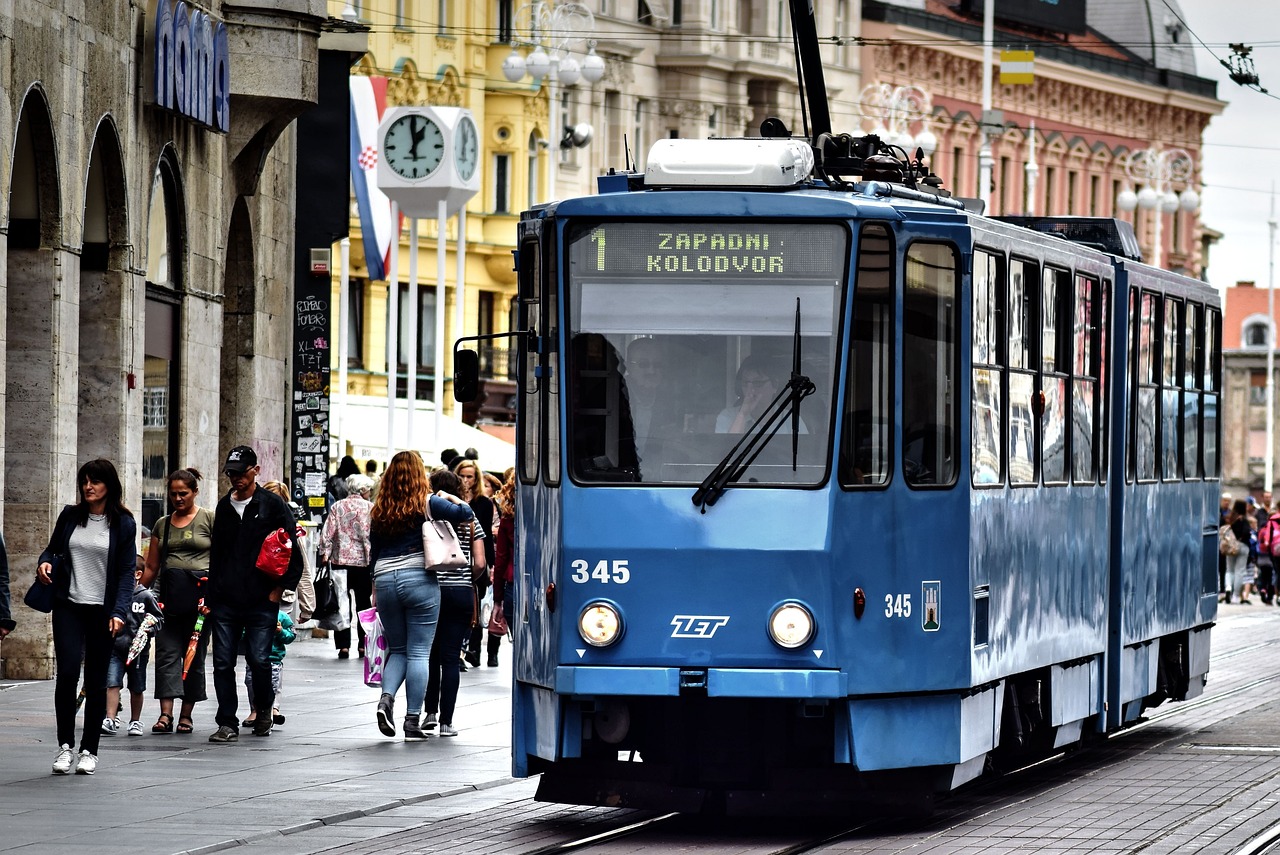
Investing in Infrastructure
When we talk about enhancing public transport systems, one of the most critical areas to focus on is infrastructure investment. Think of urban transport like the veins of a city; if they’re clogged or damaged, everything else suffers. Upgrading transport infrastructure is not just about building shiny new stations or expanding routes; it’s about creating a seamless experience for commuters that encourages them to leave their cars at home. Imagine a world where public transit is not just an option, but the preferred choice for getting around!
One of the first steps in this journey is to modernize existing stations. Many urban stations are outdated and lack the facilities that today’s commuters expect. Upgraded stations should include features such as:
- Accessibility: Elevators and ramps for those with mobility challenges.
- Comfort: Waiting areas with seating, shelter from the elements, and amenities like restrooms and vending machines.
- Information Systems: Digital displays showing real-time arrival and departure information.
Additionally, expanding routes is essential for reaching underserved areas. It’s not just about adding more buses or trains; it’s about connecting communities. For instance, if a new housing development pops up on the outskirts of a city, public transport needs to adapt. New routes should be designed based on data-driven insights that highlight where people live and work, ensuring that everyone has access to reliable transport options.
Moreover, we cannot overlook the importance of accommodating increased passenger loads. As urban populations grow, so does the demand for public transport. This means investing in larger vehicles, such as double-decker buses or longer trains, and ensuring that these vehicles are not just efficient but also environmentally friendly. Imagine the impact of a fleet of electric buses gliding silently through the streets, reducing noise pollution while providing a smooth ride for commuters.
In summary, investing in infrastructure is a multi-faceted approach that involves:
- Modernizing stations to enhance user experience.
- Expanding routes to cover more areas and connect communities.
- Upgrading vehicles to meet growing demand while promoting sustainability.
Ultimately, these improvements can lead to a shift in public perception. When people see a reliable, comfortable, and efficient public transport system, they’re more likely to choose it over driving. This not only eases congestion but also contributes to a healthier environment. So, let’s embrace the challenge and invest in the infrastructure that will pave the way for a brighter, more connected urban future!
Q: Why is infrastructure investment crucial for public transport?
A: Infrastructure investment is essential because it directly impacts the quality and efficiency of public transport systems. Modern, accessible, and well-connected infrastructure encourages more people to use public transport, reducing congestion and pollution.
Q: What types of infrastructure upgrades are most beneficial?
A: Beneficial upgrades include modernizing stations, expanding routes, and investing in larger and more sustainable vehicles. These changes enhance user experience and accommodate growing urban populations.
Q: How can data analytics improve transport infrastructure planning?
A: Data analytics can provide insights into travel patterns, user preferences, and peak demand times, allowing transport authorities to make informed decisions about where to invest and how to optimize services.

Enhancing Technology Integration
In today's fast-paced world, enhancing technology integration in public transport systems is not just a luxury; it's a necessity. Imagine waiting at a bus stop, checking your phone, and seeing exactly when your bus will arrive. This is the kind of convenience that modern technology can bring to urban transport. By leveraging cutting-edge technologies, cities can transform the way people commute, making it not only easier but also more enjoyable.
One of the most significant advancements in public transport is the implementation of real-time tracking systems. These systems allow commuters to monitor the location of buses and trains in real-time, reducing the uncertainty that often accompanies public travel. No more standing in the cold, wondering when the next bus will arrive! With apps that provide live updates, passengers can plan their journeys more effectively, leading to a smoother commuting experience.
Mobile applications play a crucial role in this technological transformation. Imagine having all your transport needs in one app: from planning your route to purchasing tickets. These apps can also provide alerts about delays or changes in service, ensuring that commuters are always informed. Furthermore, integrating smart ticketing systems can streamline the payment process, allowing users to pay with just a tap of their smartphones, which is not only convenient but also helps in reducing cash handling costs.
Another exciting aspect of technology integration is the use of data analytics to improve service delivery. By analyzing travel patterns and user feedback, transport authorities can identify peak times, popular routes, and even potential areas for expansion. This data-driven approach enables more responsive planning, ensuring that services are aligned with actual user needs. For instance, if data shows a surge in ridership on a particular route during certain hours, authorities can adjust schedules or increase the frequency of service to accommodate this demand.
| Technology | Benefits |
|---|---|
| Real-Time Tracking | Reduces wait times, enhances user experience |
| Mobile Apps | Streamlines route planning and ticket purchasing |
| Data Analytics | Informs better service planning based on user behavior |
| Smart Ticketing | Facilitates quick and easy payments |
Moreover, the integration of smart traffic management systems can further optimize public transport efficiency. These systems use sensors and cameras to monitor traffic conditions in real-time, allowing for dynamic adjustments to traffic signals and public transport routes. This not only helps in reducing congestion but also ensures that public transport vehicles remain on schedule, making them a more reliable choice for commuters.
In conclusion, enhancing technology integration in public transport systems is about creating a seamless, efficient, and user-friendly experience for commuters. By embracing innovations like real-time tracking, mobile applications, and data analytics, cities can not only improve service delivery but also foster a culture of public transport usage. The future of urban mobility is bright, and technology is at the forefront of this transformation.
- What are the benefits of real-time tracking in public transport?
Real-time tracking helps reduce wait times and enhances the overall user experience by providing accurate arrival information. - How do mobile apps improve public transport?
Mobile apps streamline route planning, ticket purchasing, and provide alerts about delays or changes in service. - What role does data analytics play in public transport?
Data analytics informs better service planning by analyzing travel patterns and user feedback, ensuring services meet actual user needs. - What is smart ticketing?
Smart ticketing allows users to pay for their journeys using mobile devices, making the payment process quick and convenient.

Data-Driven Decision Making
In the realm of public transport, is not just a buzzword; it's a game changer. Imagine trying to navigate a busy city without a map or GPS. Frustrating, right? That’s exactly how transport authorities operate when they lack data. By harnessing the power of data analytics, cities can transform their public transport systems from chaotic and inefficient to streamlined and user-friendly.
Data analytics allows transport planners to assess travel patterns, identify peak usage times, and understand passenger demographics. For example, if data shows that a particular bus route is consistently overcrowded during morning rush hours, authorities can increase the frequency of buses on that route. This not only alleviates overcrowding but also enhances the overall commuting experience for passengers. The key is to use data not just as a tool, but as a compass guiding the way towards better decision-making.
Furthermore, integrating real-time feedback from users can significantly enrich the data pool. Commuters can provide insights into their experiences, highlighting areas that need improvement. For instance, if multiple users report delays on a specific line, transport authorities can investigate and take action. This two-way communication creates a responsive transport system that evolves with the needs of its users.
To illustrate the importance of data-driven strategies, consider the following table showcasing the impact of data analytics on public transport efficiency:
| Data Insight | Action Taken | Outcome |
|---|---|---|
| High congestion on Route A during peak hours | Increased bus frequency | Reduced wait times by 30% |
| Low ridership on Route B | Modified route and added stops | Increased ridership by 50% |
| Frequent complaints about bus cleanliness | Implemented regular cleaning schedules | Improved customer satisfaction ratings |
As we delve deeper into this data-centric approach, it’s essential to remember that the ultimate goal of data-driven decision making is to create a public transport system that is not only efficient but also accessible and reliable. By continuously analyzing data and adapting strategies, cities can ensure that their transport systems meet the ever-changing needs of their residents.
In conclusion, embracing a data-driven mindset is crucial for the future of urban mobility. It empowers transport authorities to make informed decisions that lead to better service delivery, ultimately enhancing the overall commuting experience. So, the next time you hop on a bus or train, remember that behind the scenes, data is at work, shaping a more efficient and user-friendly transport system.
- What is data-driven decision making? It refers to the practice of making decisions based on data analysis and interpretation rather than intuition or observation alone.
- How can data improve public transport? By analyzing travel patterns and user feedback, authorities can optimize routes, schedules, and services to better meet commuter needs.
- What tools are used for data analysis in public transport? Common tools include data analytics software, GIS mapping, and real-time tracking systems that help collect and analyze passenger data.
- Why is user feedback important? User feedback provides direct insights into commuter experiences, helping authorities identify specific areas for improvement.
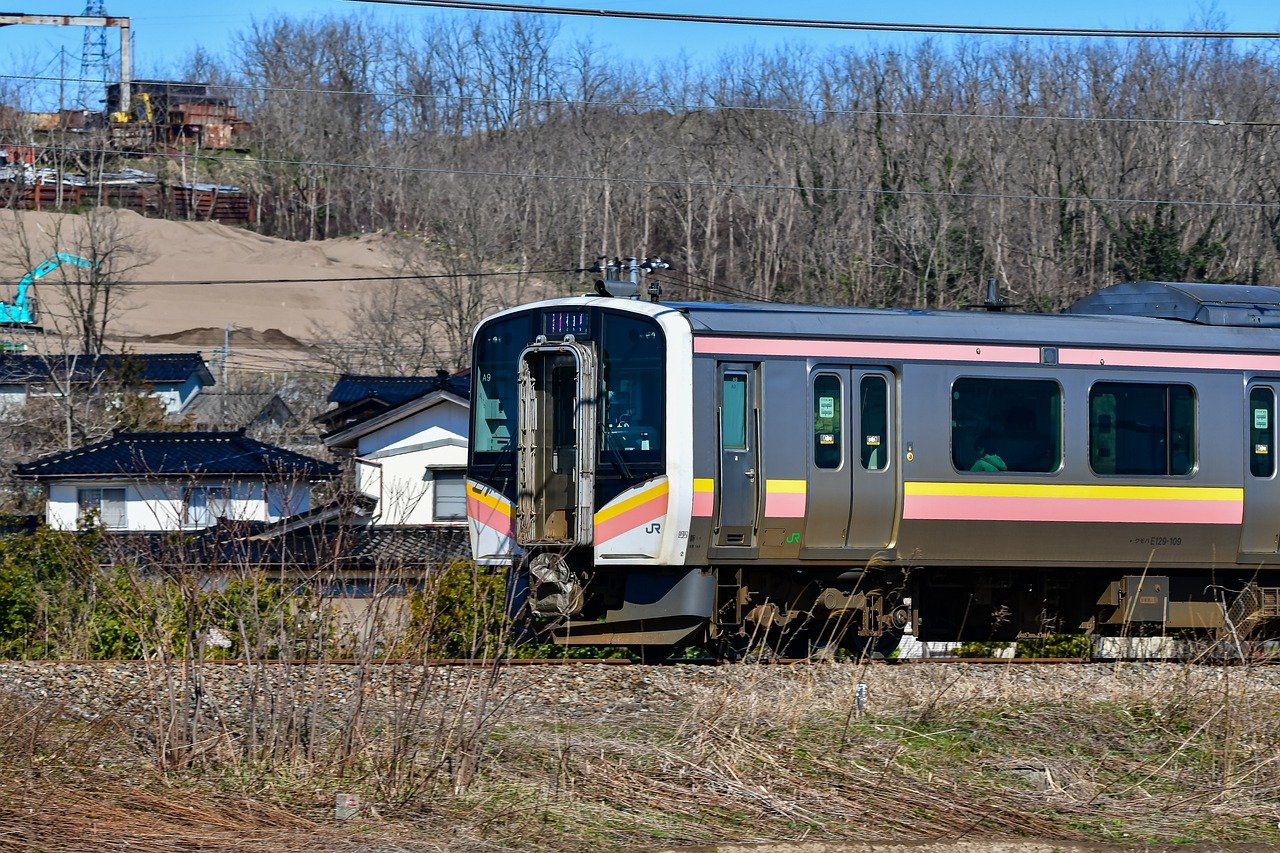
Smart Traffic Management
In today's fast-paced urban environment, traffic congestion has become a significant hurdle for public transport systems. Imagine being stuck in a never-ending line of cars, watching the minutes tick away as your bus sits idle. It's frustrating, right? That's where comes into play. By utilizing advanced technologies, cities can optimize traffic flow, reduce delays, and enhance the overall reliability of public transport services.
At its core, smart traffic management leverages a combination of real-time data, artificial intelligence, and connectivity to make informed decisions about traffic patterns. For instance, traffic signals can be synchronized based on the volume of vehicles approaching an intersection, allowing for smoother transitions and minimizing wait times. This is not just about cars; it also extends to buses and other forms of public transport, ensuring they can navigate through the city efficiently.
One remarkable aspect of smart traffic management is its ability to adapt to changing conditions. Whether it's a sudden influx of vehicles due to a concert or an accident that blocks a major road, these systems can respond in real-time. By analyzing data from various sources, including traffic cameras, sensors, and even social media feeds, traffic management systems can reroute buses, adjust signal timings, and inform commuters about alternative routes. This proactive approach significantly enhances the user experience and encourages more people to rely on public transport.
Moreover, the benefits of smart traffic management extend beyond just reducing congestion. It can also lead to environmental benefits. By optimizing traffic flow, vehicles spend less time idling, which in turn reduces fuel consumption and lowers emissions. This is crucial for cities striving to meet their sustainability goals and combat climate change. In fact, studies have shown that implementing smart traffic solutions can lead to a substantial decrease in greenhouse gas emissions, making our cities not only more efficient but also more livable.
To illustrate the impact of smart traffic management, consider the following table that shows the potential improvements in key performance indicators:
| Key Performance Indicator | Before Implementation | After Implementation |
|---|---|---|
| Average Commute Time | 45 minutes | 30 minutes |
| Bus Punctuality | 60% | 85% |
| CO2 Emissions | 1000 tons/month | 750 tons/month |
As cities continue to grow, the importance of smart traffic management cannot be overstated. It represents a forward-thinking solution that addresses current challenges while paving the way for a more efficient and sustainable future. By investing in these technologies, urban areas can not only improve the daily commute for their residents but also create a more vibrant and connected community.
- What is smart traffic management?
Smart traffic management involves using technology to optimize traffic flow and improve the efficiency of transportation systems.
- How does it benefit public transport?
It reduces delays, enhances reliability, and encourages more people to use public transport, ultimately leading to less congestion.
- Can smart traffic management help the environment?
Yes, by reducing idling times and optimizing routes, it lowers fuel consumption and emissions.
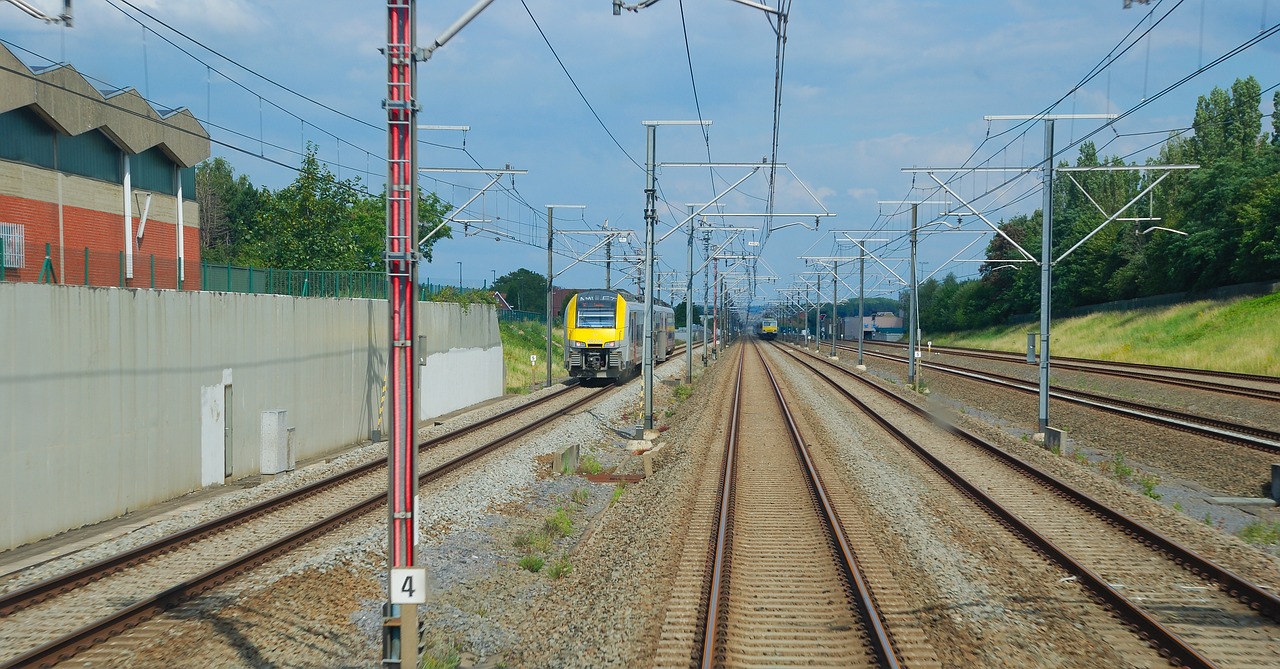
Promoting Sustainable Practices
In today's world, where climate change and environmental degradation are pressing issues, in urban transport systems is not just a choice; it's a necessity. By adopting eco-friendly methods, cities can significantly reduce their carbon footprint while also enhancing the quality of life for their residents. Imagine a city where the air is clean, the streets are bustling with cyclists, and public transport is powered by renewable energy sources. This vision can become a reality through strategic initiatives aimed at sustainability.
One of the most effective ways to promote sustainability in public transport is by investing in electric vehicles. Electric buses and trams not only emit zero tailpipe emissions but also contribute to quieter, more pleasant urban environments. Many cities are already making the switch, and the results are promising. For instance, cities like Los Angeles and Shenzhen have introduced electric buses, leading to a significant reduction in air pollution. Furthermore, the operational costs of electric vehicles tend to be lower than their diesel counterparts, making them a smart financial choice for municipalities.
Another sustainable practice to consider is the implementation of bike-sharing programs. These programs encourage residents to opt for cycling over driving, thereby reducing traffic congestion and lowering greenhouse gas emissions. Imagine a scenario where you can easily grab a bike from a nearby station, ride it to your destination, and return it without the hassle of maintenance or parking. This not only promotes a healthier lifestyle but also fosters a sense of community as people engage more with their surroundings. Cities like Amsterdam and Copenhagen have set exemplary standards in this regard, demonstrating that bike-sharing can be an integral part of urban mobility.
Moreover, integrating public transport with active transport options can amplify sustainability efforts. For instance, creating dedicated bike lanes that connect seamlessly with bus and train stations encourages commuters to use multiple modes of transport. This integration can be visualized as a well-oiled machine, where each component works together to create an efficient and eco-friendly transport network. A recent study showed that cities that prioritize such integrations see a marked increase in public transport usage, leading to reduced traffic and pollution levels.
To further enhance sustainability, cities should consider incentivizing the use of public transport. This could be achieved through subsidies, discounts, or even tax benefits for users who regularly opt for public transport over personal vehicles. A well-structured incentive program can motivate individuals to make greener choices, ultimately leading to a more sustainable urban environment. For example, cities like Singapore have successfully implemented such programs, resulting in a significant uptick in public transport ridership.
In summary, promoting sustainable practices in urban transport is not merely about switching to electric buses or launching bike-sharing programs. It's about creating a holistic approach that encompasses various elements of urban mobility. By fostering community engagement, integrating different transport modes, and providing incentives, cities can pave the way for a greener, more sustainable future. The journey towards sustainable urban transport is a collaborative effort that requires the commitment of all stakeholders, from government officials to everyday commuters.
- What are the benefits of electric buses?
Electric buses reduce air pollution, lower operational costs, and create quieter urban environments. - How do bike-sharing programs contribute to sustainability?
They encourage cycling, reduce traffic congestion, and promote a healthier lifestyle among residents. - What is the importance of integrating different modes of transport?
Integration enhances efficiency, encourages public transport use, and reduces overall emissions. - How can cities incentivize public transport use?
Through subsidies, discounts, and tax benefits that reward regular users of public transport.
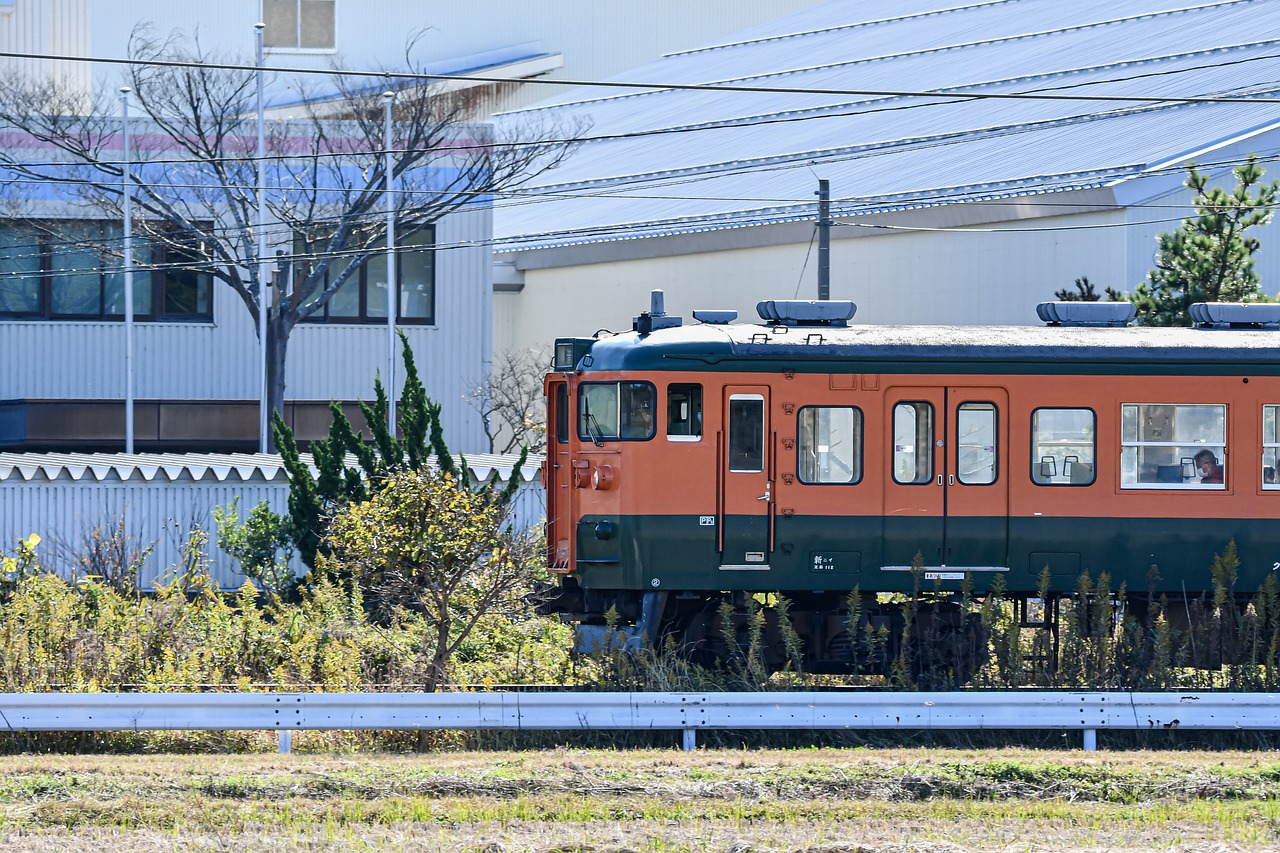
Community Engagement and Feedback
Engaging the community in the planning and enhancement of public transport systems is not just a good idea; it's a necessity. When local residents feel involved, they are more likely to support and utilize the services being provided. Think of it like building a house; if you don’t consult the people who will live there, the result might not be what they need. This is where community engagement and feedback come into play.
One effective way to gather insights from the community is through surveys and workshops. These platforms allow transport authorities to collect valuable data on user experiences and expectations. For instance, a simple survey can reveal whether commuters prefer more frequent services or a greater variety of routes. Workshops, on the other hand, provide a space for open dialogue, allowing residents to express their concerns and suggestions directly. Imagine sitting in a room filled with passionate commuters discussing their daily struggles; the ideas that come from such interactions can be transformative.
Furthermore, involving the community in decision-making processes fosters a sense of ownership. When people feel like their voices matter, they are more likely to advocate for the systems that serve them. This can lead to a healthier relationship between transport authorities and the public. It’s a win-win situation. To illustrate this, consider the following table that outlines the benefits of community engagement:
| Benefit | Description |
|---|---|
| Increased Satisfaction | When users feel their needs are met, satisfaction levels rise. |
| Improved Services | Feedback leads to tailored services that better meet user demands. |
| Stronger Community Ties | Engagement fosters collaboration and trust within the community. |
Moreover, building partnerships with local businesses and community organizations can amplify the impact of public transport initiatives. These collaborations can help in disseminating information about new services or improvements, ensuring that the message reaches a broader audience. For example, a local cafe might display flyers about upcoming transport changes, while also offering discounts to commuters. This not only promotes public transport but also supports local businesses, creating a symbiotic relationship.
In the end, community engagement is about more than just gathering feedback; it’s about creating a culture of collaboration and responsiveness. When urban transport systems actively listen to their users, they can evolve in ways that truly reflect the needs and desires of the community. This approach not only enhances the efficiency and accessibility of public transport but also contributes to a more sustainable urban environment where everyone feels included.
- Why is community engagement important for public transport? It ensures that the services meet the actual needs of the users, leading to higher satisfaction and usage rates.
- How can I participate in community feedback initiatives? Look out for surveys, workshops, and public meetings organized by local transport authorities.
- What are the benefits of partnerships in public transport? Partnerships can enhance outreach, improve service offerings, and foster a sense of community ownership.

Conducting Surveys and Workshops
Engaging with the community through surveys and workshops is an essential strategy for enhancing public transport systems. By directly involving users in the conversation, transport authorities can gain invaluable insights into the needs and preferences of the community. Think of it as a two-way street: while authorities gather data, the community feels heard and valued, fostering a stronger bond between the two.
Surveys can be conducted in various ways—online, via mail, or even in person at transit stations. Each method has its unique advantages. For instance, online surveys can reach a broader audience quickly, while in-person surveys might yield more detailed responses due to face-to-face interaction. It's crucial to design these surveys with clear, concise questions that encourage honest feedback. Consider including a mix of multiple-choice questions and open-ended questions to gather both quantitative and qualitative data.
Workshops, on the other hand, provide a platform for more in-depth discussions. These interactive sessions allow participants to voice their thoughts, share experiences, and brainstorm potential solutions. Imagine a room filled with passionate commuters, sharing their daily struggles and triumphs. This kind of collaborative environment can lead to innovative ideas that might not emerge in a traditional survey format.
To ensure the effectiveness of these initiatives, transport authorities should consider the following key elements:
- Timing and Location: Choose convenient times and accessible locations to maximize participation. Evening sessions might work better for working individuals, while weekend workshops could attract families.
- Incentives: Offering small incentives, such as gift cards or discounts on transportation fares, can boost attendance and participation.
- Follow-Up: After gathering feedback, it's essential to communicate back to the participants. Let them know how their input will shape the future of public transport. This transparency builds trust and encourages ongoing engagement.
In summary, conducting surveys and workshops is not just about collecting data; it's about building a community around public transport. When users feel like they have a stake in the system, they are more likely to support improvements and use the services regularly. It’s a win-win situation that leads to a more responsive and effective public transport system.
| Question | Answer |
|---|---|
| How often should surveys be conducted? | Surveys should be conducted at least once a year to keep up with changing community needs and preferences. |
| What topics should be covered in the workshops? | Workshops should cover a range of topics, including current transport challenges, proposed improvements, and sustainable practices. |
| How can I get involved in local transport initiatives? | Check your local transport authority's website for upcoming surveys and workshops, and sign up for newsletters to stay informed. |
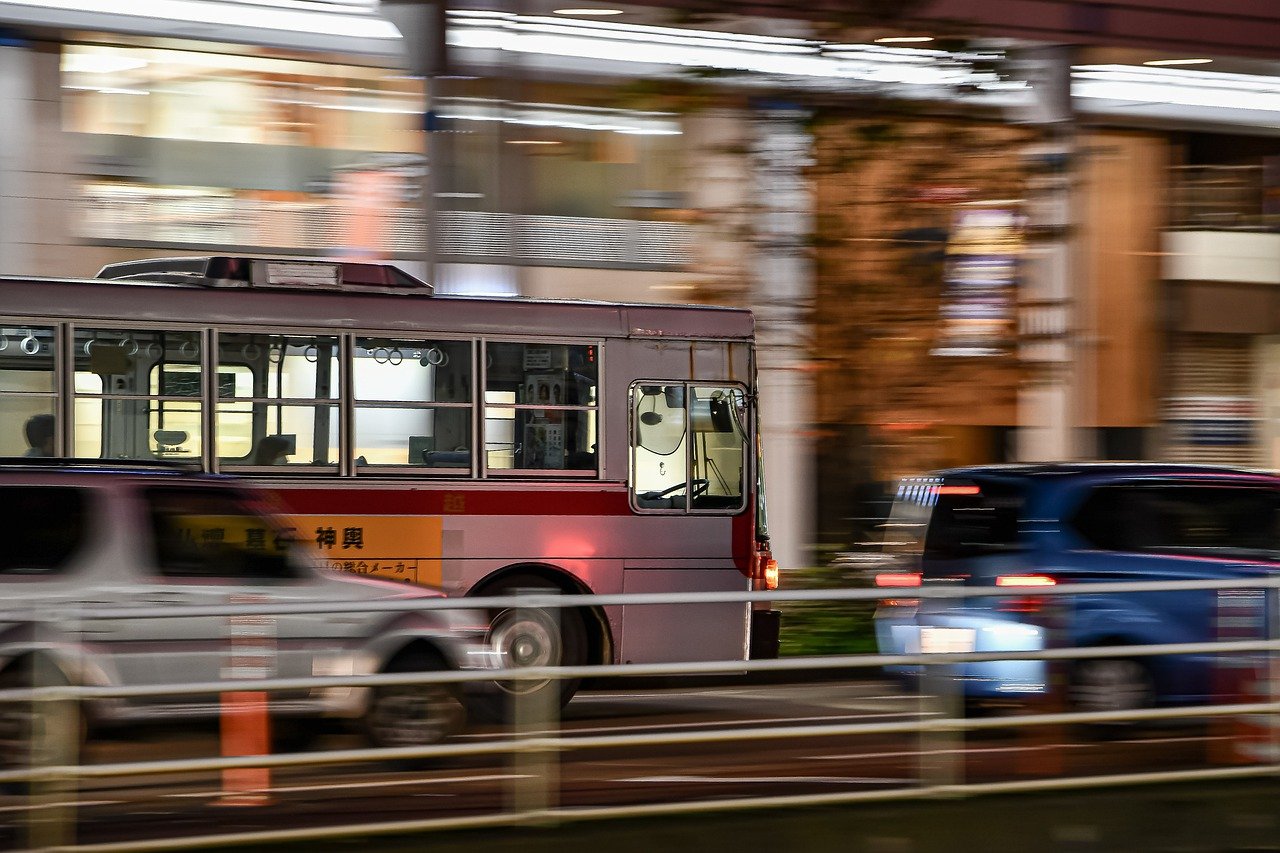
Building Partnerships
In the ever-evolving landscape of urban transport, collaboration is key to creating systems that genuinely meet the needs of the community. Building partnerships among various stakeholders—such as local businesses, community organizations, and government agencies—can significantly enhance public transport initiatives. Imagine a well-oiled machine where each cog works in harmony, driving forward a shared vision of improved mobility. That’s the kind of synergy we’re aiming for!
When different entities come together, they can pool resources, share insights, and create innovative solutions that might not have been possible in isolation. For instance, local businesses can offer incentives to commuters who use public transport, thereby increasing ridership while simultaneously benefiting from a larger customer base. Community organizations can provide valuable feedback and help spread the word about new services, ensuring that the benefits reach those who need them most.
Moreover, partnerships can lead to the development of integrated transport solutions. By collaborating with various stakeholders, cities can create seamless connections between different modes of transport—think buses, trains, and bike-sharing programs—all working together to make commuting easier. This approach not only enhances the user experience but also promotes a sense of community ownership over the transport system.
To illustrate the potential of these partnerships, consider the following table that highlights successful examples of collaborative efforts in urban transport:
| City | Partnerships | Outcome |
|---|---|---|
| San Francisco | Local businesses and transit authorities | Increased ridership and reduced congestion |
| Amsterdam | Government and bike-sharing companies | Enhanced bike infrastructure and usage |
| London | Public transport and tech companies | Smart ticketing and real-time updates |
Ultimately, building partnerships is about more than just improving public transport; it's about creating a sustainable future for urban living. When communities feel involved in the decision-making process, they are more likely to support and utilize the systems in place. This sense of ownership can lead to a more engaged citizenry, ready to advocate for continued improvements and innovations in their local transport networks.
As we look to the future, fostering these partnerships will be crucial. The more voices we have at the table, the more comprehensive and effective our public transport systems can become. It’s like throwing a potluck dinner—everyone brings their best dish, and together, you end up with a feast that satisfies everyone’s tastes. So let’s get cooking!
- Why are partnerships important in urban transport? Partnerships help combine resources and expertise, leading to more effective and innovative transport solutions.
- How can local businesses contribute to public transport initiatives? They can offer discounts to commuters, promote public transport usage, and engage in joint marketing efforts.
- What role do community organizations play? They provide valuable feedback, help raise awareness, and ensure that the transport services meet the needs of diverse populations.
- Can technology companies be part of these partnerships? Absolutely! They can offer solutions such as smart ticketing and real-time tracking to enhance user experience.

Future Trends in Urban Transport
The landscape of urban transportation is on the brink of a major transformation, driven by technological advancements and changing societal needs. As cities grow and evolve, the **future of urban transport** will likely be shaped by several key trends that promise to make commuting more efficient, sustainable, and user-friendly. Imagine a world where autonomous vehicles glide silently through the streets, seamlessly integrated with smart traffic systems, while commuters enjoy a variety of transport options at their fingertips. Sounds exciting, right?
One of the most significant trends is the **rise of autonomous vehicles**. These self-driving cars have the potential to revolutionize urban mobility by reducing traffic congestion and accidents caused by human error. According to recent studies, cities that adopt autonomous vehicles could see a reduction in traffic fatalities by up to **90%**. Furthermore, these vehicles can be designed to operate on-demand, allowing users to summon a ride via an app, similar to how we currently use ride-sharing services. This shift could lead to a dramatic decrease in the number of privately owned vehicles, thus reducing the overall carbon footprint.
Another exciting trend is the expansion of **shared mobility services**. As urban populations continue to grow, the demand for flexible and affordable transport options is increasing. Shared mobility encompasses various modes of transport, including car-sharing, bike-sharing, and scooter-sharing. This trend not only promotes sustainable commuting but also reduces the need for parking spaces in crowded urban areas. Imagine a city where you can hop on a shared bike or scooter to get to your destination quickly, without the hassle of finding parking. It’s a win-win situation!
Moreover, the integration of **smart technologies** into public transport systems is set to enhance user experience significantly. Real-time tracking systems, mobile applications, and smart ticketing solutions make commuting easier and more efficient. Commuters can plan their journeys more effectively, reducing wait times and improving overall satisfaction. For instance, a mobile app could provide updates on bus arrivals, allowing users to spend less time waiting at stops and more time enjoying their day. This level of convenience is becoming a necessity in our fast-paced lives.
As we look toward the future, it's also essential to consider the role of **sustainability** in urban transport. Cities are increasingly adopting electric vehicles (EVs) as part of their public transport fleets. This shift not only helps to reduce greenhouse gas emissions but also improves air quality in urban environments. Additionally, the promotion of **green infrastructure**, such as dedicated bike lanes and pedestrian-friendly zones, encourages healthier commuting habits and reduces reliance on fossil fuels. Imagine cycling through a city designed with your comfort and safety in mind, where bike lanes are as common as car lanes.
To further illustrate these trends, let's take a look at the following table that summarizes the key innovations and their potential impacts on urban transport:
| Trend | Description | Potential Impact |
|---|---|---|
| Autonomous Vehicles | Self-driving cars that operate on-demand | Reduction in traffic fatalities and congestion |
| Shared Mobility | Car-sharing, bike-sharing, and scooter-sharing services | Decreased need for parking and lower transportation costs |
| Smart Technologies | Real-time tracking and mobile apps for public transport | Enhanced user experience and reduced wait times |
| Sustainable Practices | Use of electric vehicles and green infrastructure | Lower emissions and improved urban air quality |
In summary, the **future of urban transport** is bright and brimming with possibilities. From autonomous vehicles to sustainable practices, the trends shaping our cities will ultimately lead to a more efficient, accessible, and eco-friendly transport system. As we embrace these innovations, we can look forward to a time when commuting is not just a necessity but a delightful experience.
- What are autonomous vehicles? Autonomous vehicles are self-driving cars that use technology to navigate without human intervention.
- How do shared mobility services work? Shared mobility services allow users to rent vehicles, bikes, or scooters for short periods, promoting flexible and affordable transport options.
- What is smart technology in public transport? Smart technology includes real-time tracking systems and mobile apps that enhance the efficiency and user experience of public transport.
- Why is sustainability important in urban transport? Sustainability in urban transport helps reduce greenhouse gas emissions, improve air quality, and promote healthier commuting habits.
Frequently Asked Questions
-
What are the main challenges facing urban public transport systems?
Urban public transport systems face several challenges, including overcrowding, inefficiency, and limited accessibility for various populations. These issues can lead to frustration among commuters and can deter people from using public transport, which is essential for reducing traffic congestion and pollution.
-
How can technology improve public transportation?
Technology plays a vital role in enhancing public transportation. By integrating real-time tracking, mobile apps for route planning, and smart ticketing systems, commuters can enjoy a more convenient and streamlined experience. This not only makes travel easier but also encourages more people to opt for public transport.
-
Why is community engagement important in public transport planning?
Community engagement is crucial because it ensures that the needs and preferences of users are considered in planning processes. By involving the community through surveys and workshops, transport authorities can gather valuable insights that lead to better service improvements and foster a sense of ownership among users.
-
What role does data analytics play in improving public transport?
Data analytics is essential for understanding transport patterns and user feedback. By analyzing this data, transport authorities can make informed decisions that enhance operational strategies, ensuring that services are responsive to the actual needs of commuters.
-
What sustainable practices can be implemented in urban transport?
Implementing sustainable practices, such as using electric buses and promoting bike-sharing programs, can significantly reduce the carbon footprint of urban transport systems. These options also encourage healthier commuting alternatives, contributing to a cleaner environment.
-
How can partnerships enhance public transport initiatives?
Building partnerships with local businesses, community organizations, and government agencies can lead to a more integrated approach to urban mobility solutions. Collaboration can help pool resources and expertise, resulting in more effective public transport initiatives that benefit the entire community.
-
What future trends should we expect in urban transport?
Emerging trends such as autonomous vehicles and shared mobility services are set to transform urban transport. Cities need to adapt to these innovations by integrating them into existing systems, which can lead to more efficient and user-friendly transport solutions.



















